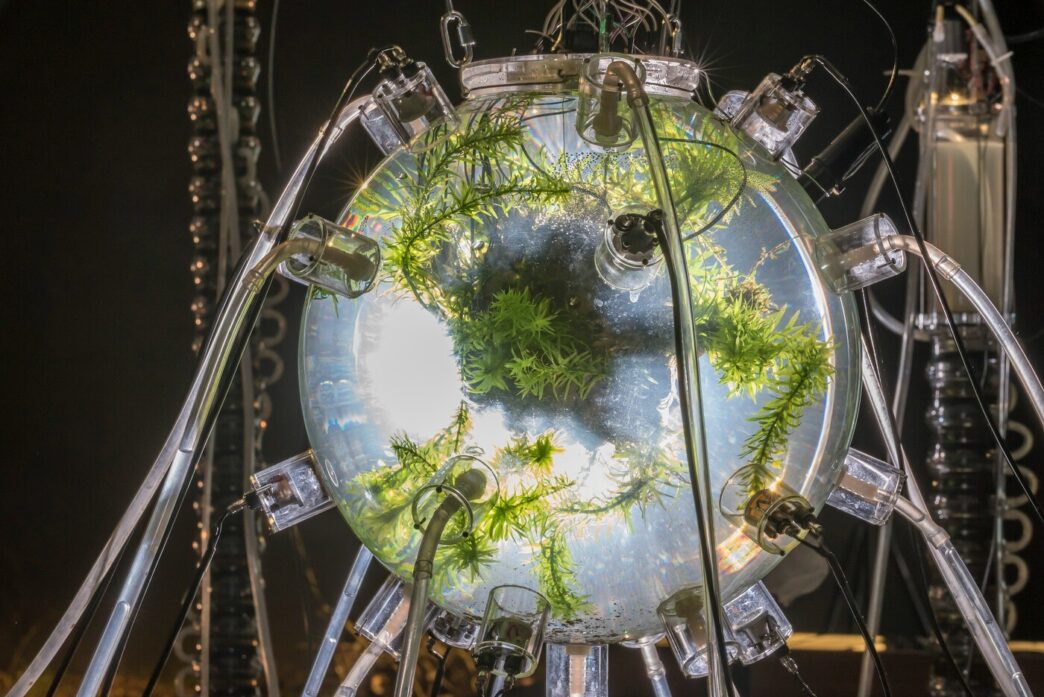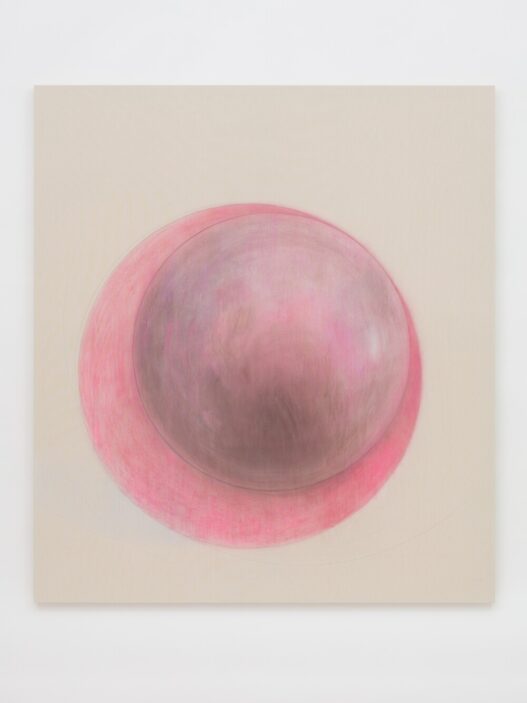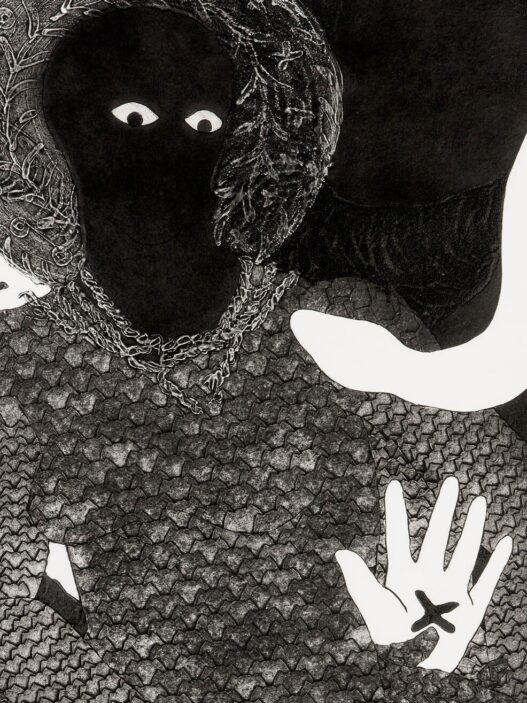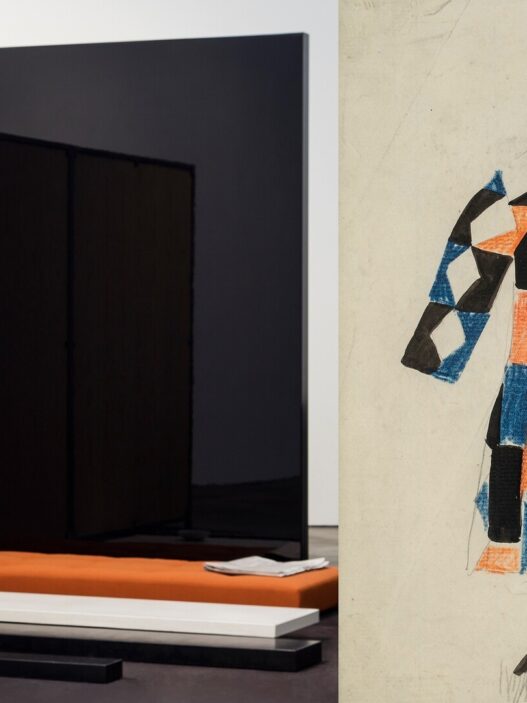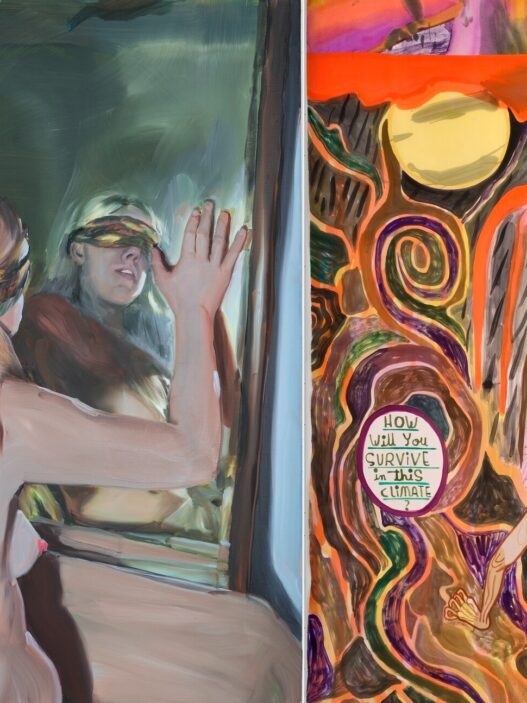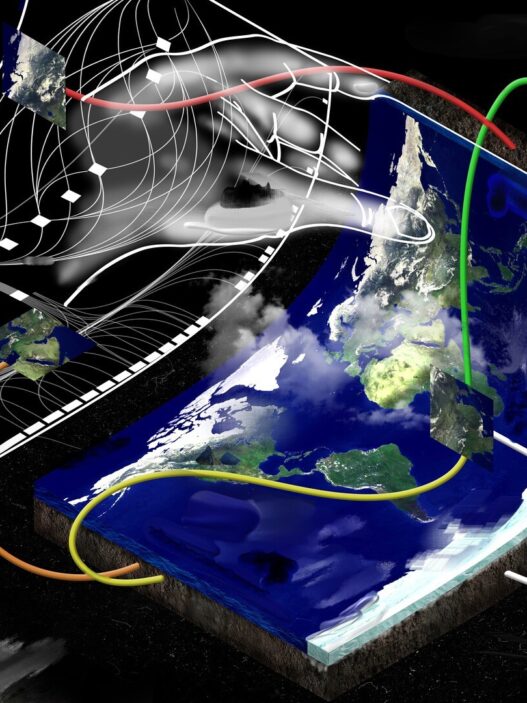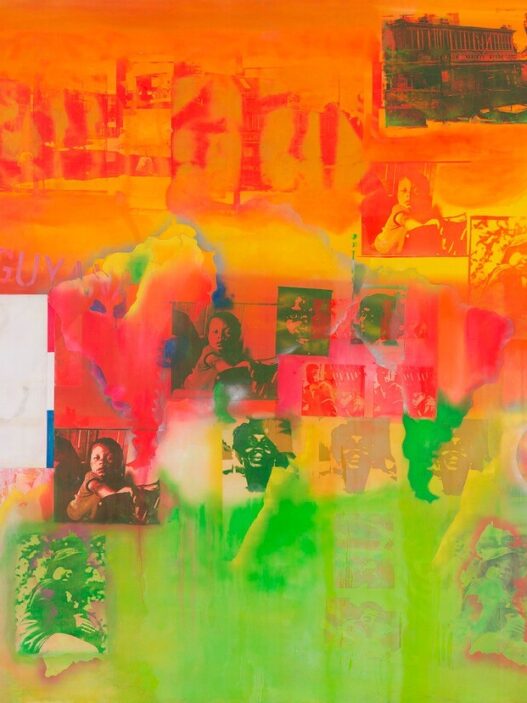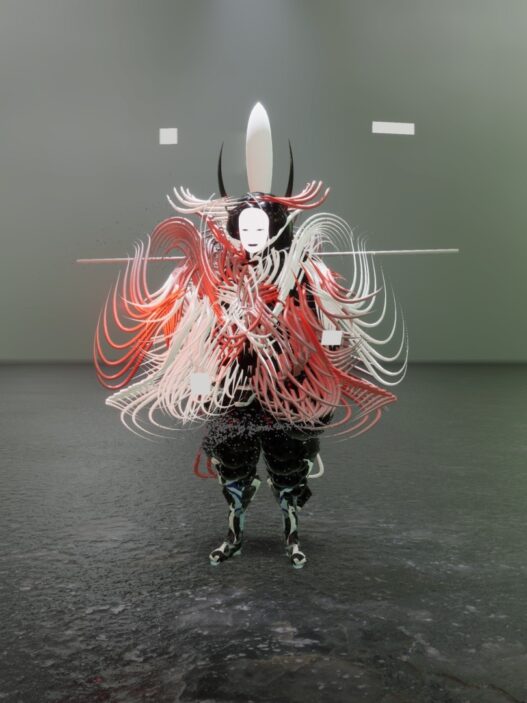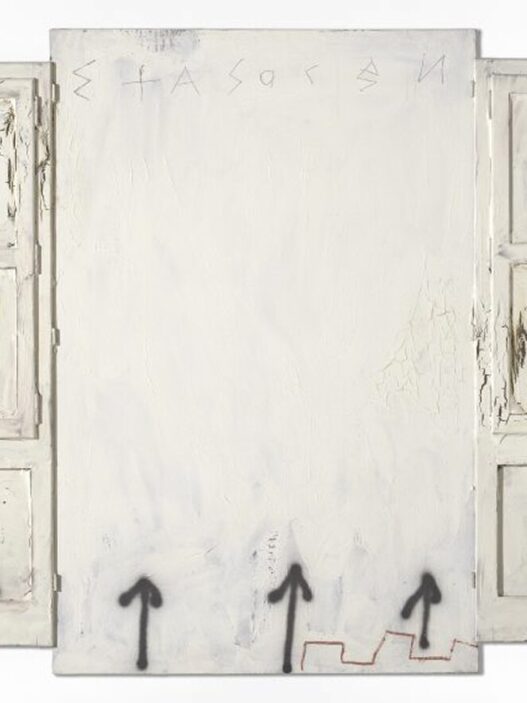October 21, 2022–February 26, 2023
Syn /\ Sym—Biology in Art & Design: November 5, 2–3:30pm, curator discussion with Caroline A. Jones, William Myers, and Jens Hauser
Chlorophilia / Chlorophobia: February 2, 6–7:30pm, panel discussion with Alan Michelson, Špela Petrič, and Miriam Simun
Symbionts: Contemporary Artists and the Biosphere, a significant group exhibition organized by the MIT List Visual Arts Center, brings together fourteen international artists whose work challenges us to reevaluate our interactions with the planet and the microbial, fungal, plant, and animal life forms that inhabit it.
Symbionts are collaborators in symbiosis, a biological term that literally translates to “with living” and refers to a variety of interdependent connections between creatures of diverse species. The display suggests a recent change in the field of bioart, which is broadly described as the practice of artists using organic or living elements. The alteration of DNA sequences by artists was a major component of bioart in the 2000s. The different practitioners in Symbionts, in contrast, are not motivated to become coding experts. Instead, the important interspecies interactions that shape our environment are revealed by their works. Some of the artists in Symbionts refer to their creations as partnerships with other life forms; for them, biological entities are welcomed as collaborators rather than just raw materials. Others use bio-remediation and conservation to demonstrate how every human action has ramifications for the environment, aesthetics, ethics, and politics. Many of the pieces on display challenge the scientific isolation of non-human lifeforms and the vitrine legacy of the Enlightenment, highlighting how we pretend to be in charge of plant-animal systems but are actually a part of them. Artists use sound, vibration, scent, and other sensory forms to express the sometimes-invisible linkages of biological, social, and economic systems throughout the exhibition.
According to Symbionts, people should abandon extraction tactics in favor of more modest, reciprocal relationships. We might learn to replace competition with collaboration and stop our anthropocentric drive toward species extinction by realizing that we are a part of an interconnected planetary ecosystem and paying attention to art that pulses with these rhythms.
Symbionts: Contemporary Artists and the Biosphere is organized by Caroline A. Jones, Natalie Bell, and Selby Nimrod, with research assistance by Krista Alba.
Participating artists
Crystal Z Campbell (b. 1980, US); Gilberto Esparza (b. 1975, Mexico); Jes Fan (b. 1990, Canada); Pierre Huyghe (b. 1962, France); Candice Lin (b. 1979, US); Alan Michelson (b. 1953, US); Nour Mobarak (b. 1985, Egypt); Claire Pentecost (b. 1956, US); Špela Petrič (b. 1980, Slovenia); Miriam Simun (b. 1984, US); Pamela Rosenkranz (b. 1979, Switzerland); Jenna Sutela (b. 1983, Finland); Kiyan Williams (b. 1991, US); Anicka Yi (b. 1971, South Korea).
About the publication
An illustrated catalogue-reader created by Omnivore and distributed by MIT Press is available to accompany the exhibition. Leah Aronowsky, Anna Tsing, Sophia Roosth, Bruce Clarke, Scott Gilbert, and Caroline A. Jones have all recently completed articles, and there are also extracts from texts by Evelyn Fox Keller, Lynn Margulis, and Robin Wall Kimmerer that were previously published. The publication is completed by additional texts on each artist written by the curators of the exhibition, as well as a comprehensive glossary of words, an edited roundtable discussion on the topics of symbiosis, reciprocity, and Indigenous epistemologies. The book is printed by Gmund and Favini on cutting-edge eco-papers (with distinct parts made of algae, citrus “mash” or coffee, and recycled leather paper). It is currently up for presale.
Exhibition support
Symbionts: Contemporary Artists and the Biosphere is made possible with the support of Fotene & Tom Coté, Audrey & James Foster, Idee German Schoenheimer, Joyce Linde, Cynthia & John Reed, and Sara-Ann & Robert Sanders. The exhibition and publication are also supported by The Andy Warhol Foundation for the Visual Arts, the Carl and Marilynn Thoma Foundation, the Richard Lounsbery Foundation, Frame Contemporary Art Finland, and the MIT Center for Art, Science, and Technology. The publication is also made possible through the support of the Jane Farver Memorial Fund at MIT List Visual Arts Center.
General operating support for the List Visual Arts Center is provided by the Massachusetts Institute of Technology (MIT); the Council for the Arts at MIT; Philip S. Khoury, Associate Provost at MIT; the MIT School of Architecture and Planning; the Mass Cultural Council; and many generous individual donors. The Advisory Committee Members of the List Visual Arts Center are gratefully acknowledged.
MIT List Visual Arts Center
20 Ames St.
Cambridge, MA 02142
United States
[email protected]










